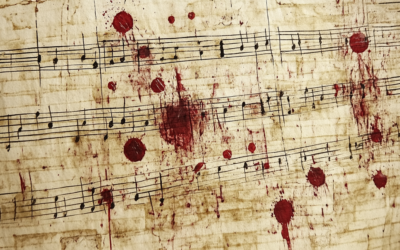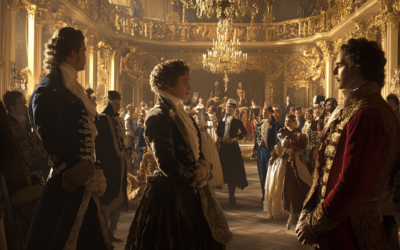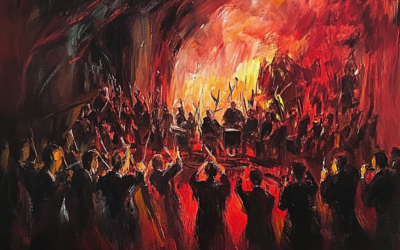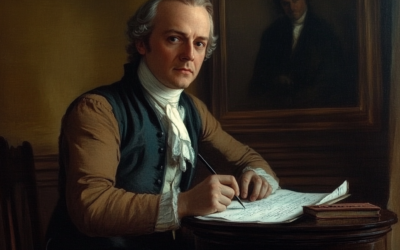The Köchel Catalogue
Mozart’s Music or Marketing Strategy?
The Köchel Catalogue, initially intended as a clear and reliable record of Mozart’s works, has instead become a web of misattributions and commercial exploits.
Ludwig von Köchel, a lawyer with no formal musical training, sought to compile a systematic list, but his lack of expertise left the catalogue riddled with errors.
After multiple revisions, it now includes dubious works pushed by publishers eager to capitalize on Mozart’s name.
What began as an attempt at organization now stands as a testament to the persistent commercialization of Mozart’s legacy, overshadowing his genuine compositions and feeding audiences with works that the composer himself would never have sanctioned.
Mozart: The Fall of the Gods
This book compiles the results of our studies on 18th-century music and Mozart, who has been revered for over two centuries as a deity. We dismantle the baseless cult of Mozart and strip away the clichés that falsely present him as a natural genius, revealing the contradictions in conventional biographies. In this work, divided into two parts, we identify and critically analyze several contradictory points in the vast Mozart bibliography. Each of the nearly 2,000 citations is meticulously sourced, allowing readers to verify the findings. This critical biography of Mozart emerges from these premises, addressing the numerous doubts raised by researchers.
"Mozart is no longer a composer but a brand, endlessly exploited to sell music that is ‘Mozartian’ in name only."
Mozart: The Fall of the Gods
he first attempt at a systematic catalogue, encompassing both Leopold and Wolfgang Mozart’s lists, was undertaken by Ludwig von Köchel. In 1862, Köchel, a lawyer by profession rather than a musicologist, published the Chronological and Thematic Catalogue of the Musical Works of Wolfgang Amadé Mozart. Though Köchel sought to clarify Mozart’s musical oeuvre, he lacked the specialized training to avoid the errors that continue to affect the reliability of his catalogue. Köchel, a knighted man of diverse interests, served as tutor to Archduke Charles’s children, was a school inspector in Salzburg, and catalogued various plant and mineral species. Music, however, was not his domain.
As a devoted amateur and collector of Vienna’s historical artifacts, Köchel faced a monumental task: hundreds of pieces were now associated with Mozart’s name, and commercial interests heightened the desire to expand Mozart’s catalogue. Publishers, keen to print every work under Mozart’s name, added to Köchel’s challenges. Bound to the German publishers of his era, he waded through many “Mozartian” works, admitting some into his loose-knit catalogue.
After Köchel’s death, his catalogue was revised five times, resulting in today’s sixth edition, K.6. Adjustments were made to the Opera omnia, removing some titles now deemed spurious, adding newly discovered works, and adjusting existing entries. To avoid rewriting the entire catalogue, an “ingenious” numbering system was devised, causing pieces to be identified by letters and numbers from different editions. For instance, a simple lullaby may be catalogued as K.350/KE.Anh.284f/K.Anh.C08.48.
The commercial push to publish works of little-known composers was deemed unprofitable. As early as the 19th century, the publishing industry focused on a select few composers — Haydn, Mozart, Beethoven, Vivaldi, Bach, Pergolesi, Brahms, Verdi, Rossini, Donizetti — who promised greater financial returns than the vast array of lesser-known musicians. The demand for “new” Mozart material continued to grow into the 20th century, accumulating works later found not to be his. Respecting the lists of Leopold and Wolfgang could have saved much confusion, but commercial interests prevailed. Many works falsely attributed to Mozart are still published, recorded, and performed as part of his repertoire, despite being flagged as dubious in the Köchel catalogue.
Mozart’s catalogue has come under scrutiny, particularly for compositions purportedly from his youth, which should be cross-checked against the list his father, Leopold, began in 1763. Leopold meticulously catalogued Mozart’s compositions, making it unlikely that works predating 1768 belong to him. If Leopold listed 13 symphonies from 1763 to 1768, adding more should prompt the question: are even those 13 authentic? They might be fewer, but not more, otherwise, the proud father would have surely noted them.
Works that fall between 1768 and 1784 are another matter, requiring careful evaluation based on historical, graphic, and musical evidence. In contrast, compositions from February 1784 to 1791, if the Wolfgang catalogue is indeed genuine (as officially upheld by musicology), should reflect Mozart’s intentions. What lies outside of this catalogue suggests his intentional exclusion, beyond the reach of editorial power plays.
Comparing Mozart’s personal catalogue with the Köchel catalogue reveals many added works that Mozart might never have endorsed. Some are fragments, drafts, references to lost works, or pieces of questionable attribution, which may include studies or notes Mozart never meant to showcase.
Mozart’s catalogue is manipulated not just for clarity but to grant a veneer of scientific authority to publishers who exploit these works as “Mozart’s.” For around 250 years, Mozart has been leveraged by all — father, archbishop, nobles, Freemasons — and reduced to a lucrative brand that profits everyone but himself. Misattributed works are fed to an unwitting audience under the pretense of “classical music,” when the only classical aspect here is the scam.
You May Also Like
The London Pieces: Mozart or Make-Believe?
The London pieces, edited for modern tastes, lose their authenticity. Only the uncorrected originals show Mozart’s true early voice—naïve yet authentic.
The Myth of the “Viennese Classics”: Mozart’s True Heritage and the Empire’s Agenda
Mozart wasn’t the quintessential Viennese; rather, he was shaped by German heritage and an opportunistic empire that controlled music as fiercely as it did its people.
The Nationalistic Roots of the Philharmonic Legacy
Under Goebbels, the Berliner Philharmoniker became an instrument of Nazi propaganda, framing German composers as the supreme guardians of musical heritage.
Australian Scholars Confirm Our Findings on Mozart’s Forged Catalogue
Professor Martin Jarvis of Darwin University confirmed our long-held findings that Mozart’s personal catalogue is a forgery, during his recent lecture The Mozart Scam. Forensic analysis continues to unravel the myths surrounding Mozart’s legacy.
The Italian Journey
The Mozarts’ Italian journey of 1769 was not a leisurely Grand Tour but a strategic mission driven by ambition, navigating the treacherous roads of 18th-century Europe in pursuit of fame and fortune.
A Revolutionary Encounter at Cremona Musica
Sharing insights on Mozart and the Neapolitan school at Cremona Musica, the premier global stage for music and culture.







